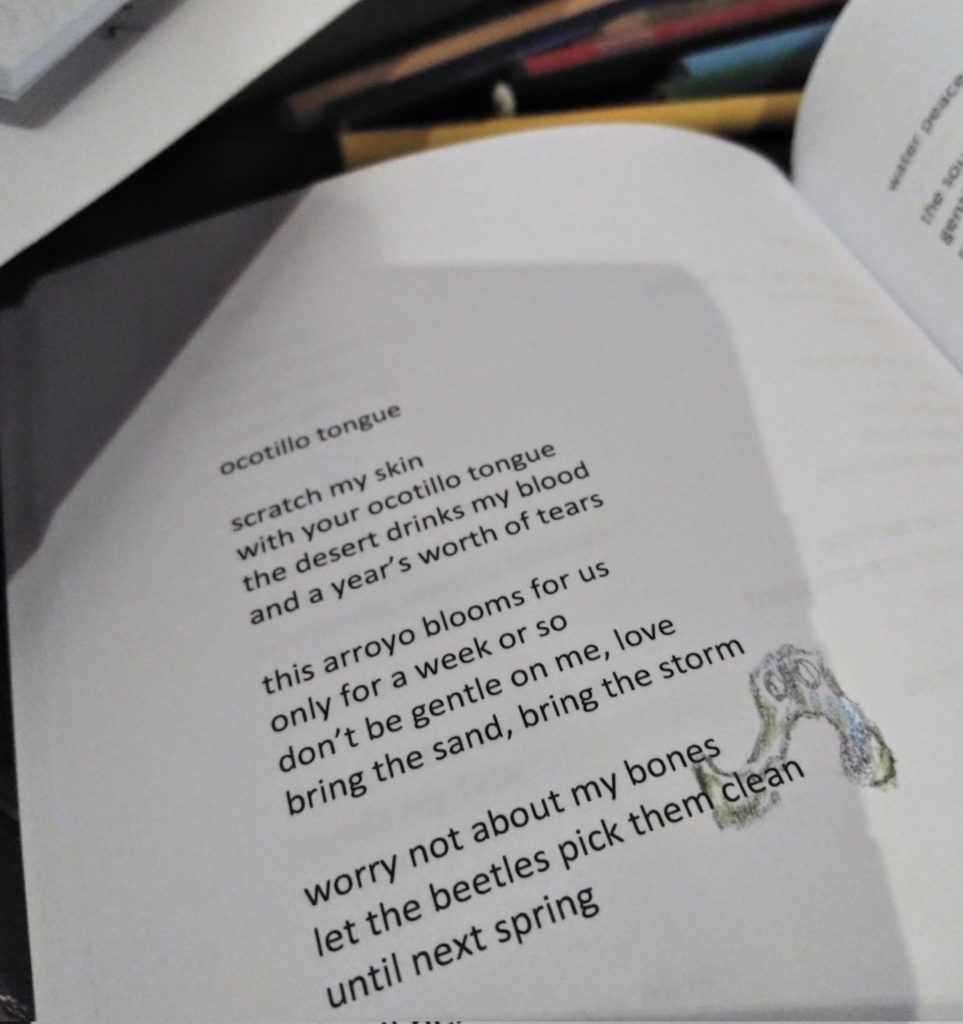…at least in the direction of it.
We often learn to expect hiddenness from poems, and we go looking for it without seeing what’s right in front of us. Poetry becomes a game that a lot of people don’t enjoy. People attempting to write poetry might focus on the hiding and forget the framework.
There’s a lesson I got from a book on poetry by Matthew Zapruder: read the poem at first assuming it’s literal.
Poetry is about emotion. We hide our emotions in tangible things: on the mantel, that delicate teacup I bought for a drinking habit I no longer have; this Mongolian sheep knee someone gave me when I asked for a rock. A pocket watch I gifted my husband every holiday because all he wanted was for me to stop spending money. I still have the watch, but not the husband.
You can see them, right? You could pick them up, examine each one, and put it back down, wondering why I keep any of these things.
We all have stories to tell; I sometimes tell mine with the vocabulary of paint or graphite instead of typeface. I like to place things in odd juxtaposition, the same way I find the world. I want to show you what I found out there. I found myself in the desert and I show you by drawing a coyote with an ocotillo tongue. It is a self-portrait.
When you tell your story, start with things your listeners can pick up. There’s a hidden message, too, perhaps, but if that’s the only reason we’re there we’ll be missing something important.
Today’s ruination of peace is this: there is no sign, but there is an opportunity to make a decision from a new perspective. This is what we (aim to) do with our encapsulated stories in song, art, or poetry. Hang up some signs to show your listeners which way you want them to walk. Use whatever vocabulary your story needs to tell itself.
Thanks to Sandy Reay for the conversation.

Further Reading:
Sandy Reay is a songwriter, storyteller, jewelry artist, photographer, often hosting workshops and concerts at her home in Colorado. Her flash fiction story, “Damn The Dream,” was published in the Pikes Peak Writers 2022 Anthology, “Dream.” She is writing a memoir and has several novels, novellas, and short stories in progress.
Artist, writer, peer reviewer for Consilience Journal, all-around ruiner of peace for the greater good, debora Ewing stands at a crossroads of her own making. Find deb’s work at Jerry Jazz Musician, Dodging the Rain, Beyond Words, Shot Glass Journal, and Plainsongs, among others. She blogs at Igneus Press and debnation.com.
Analog Revolution is a project spearheaded by Nadia Young. She has a strong connection to pre-digital, tangible things. She also has a cactus with suicidal tendencies. Watch out for her!
Eric Tucker is the editor at Plainsongs. I’ve had wonderful communications with him over the years. Have a look at this wonderful print magazine, which is now also available in .pdf. I think I need to send him something…
Why Poetry? is a distilled decade of rumination by Matthew Zapruder, a prolific American Poet. He gives concrete examples for the concepts he wants to share with us so that we can find our own why? This book encouraged my collection of engineers, coders, cryptographers, researchers, and jugglers to write some poetry of their own.











